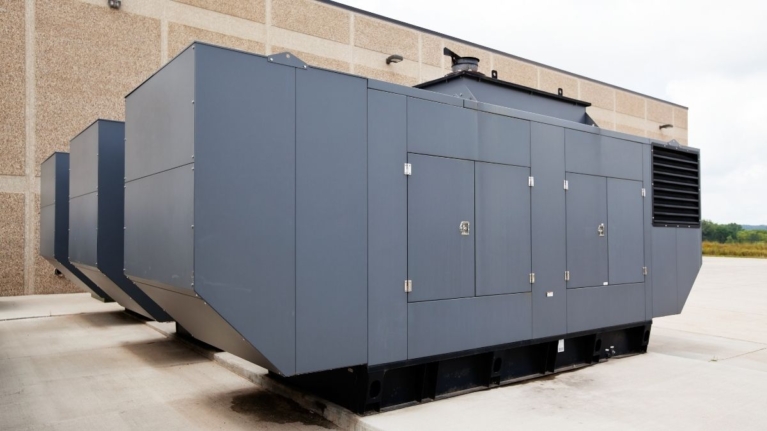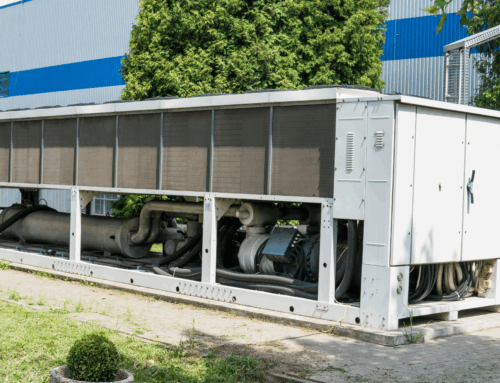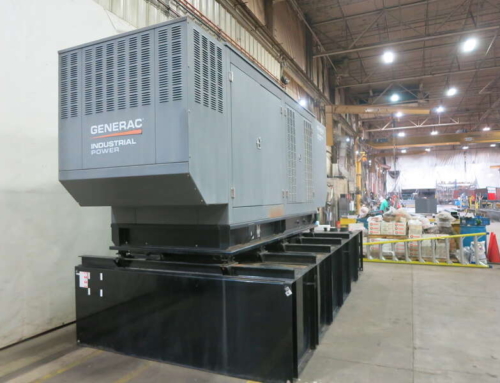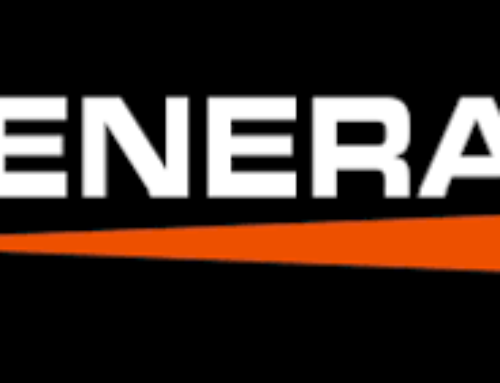Are you looking for a commercial generator glossary? You’ve come to the right place!
As commercial generators continue to advance, the terms used in the industry are becoming more specific and technical. We’ve created this detailed generator glossary to help you understand and use generator jargon. You can bookmark it and return to this page whenever you have a question regarding the terms associated with commercial generators.
Your Commercial Generator Glossary
Generators
- Backup Generator: Used as a standby energy source to fulfill emergency load requirements when there is sudden loss or shortage of power.
- Diesel Generators: Starts automatically and generators electrical power during power outages.
- Electric Generator: Generates electric power with the help of mechanical energy obtained from an external source.
- Generator: A device that converts chemical or kinetic energy into electric power. The electrical energy is available either in the form of direct current (DC) or alternating current (AC).
- Genset: A handy power generator used to convert fuel-based power to electric power. Underslung and clip-on gensets are the most widely used.
- Motor Generator: Used to condition or regulate power from a raw power source such as an electrical grid.
- Non-Utility Generator: A non-utility generator is connected to a power grid system to generate electric power, particularly for those not covered by the utility system.
- Stationary Generator: Also known as a standby generator, the stationary generator is used for power backup and can support high power levels for an extended period. It is driven by LP gas or gasoline.
- Turbine Generator: A turbine generator runs on a steam or gas turbine. It generates electric power through electromagnetic forces caused by water, wind, steam, etc.
See related: How long diesel generator run continuously?
Terms Related to Generator System
- Air Filter: Filters solid particulates like pollen, dust, and mold in the compressed air.
- Alternating Current: An electric current that continuously changes its magnitude and periodically reverses direction.
- Arc: Discharge of electricity across a gap in a circuit.
- Blackout: Abrupt loss of electric power.
- Current: A flow of electricity caused by the movement of particles.
- Direct Current: An electric current with a unidirectional flow produced by electromagnetic induction or storage battery.
- Diesel Engine: An internal combustion engine within which fuel ignition occurs by heat generated from air compression.
- Distribution: Delivery of lower voltage electricity from a centralized substation to the point where it is needed.
- HVAC system: Heating, ventilation, and air conditioning system.
- Grid: An interconnected system of generators and power lines used to meet the power requirements at the grids at different points.
- Load: Amount of electricity used by devices connected to an electric power generating system.
- Off-Peak: A time interval when electricity demand is relatively low. Calculated by NERC, from Monday to Saturday, from 10 p.m. until 6 a.m., and during the entire day on Sunday.
- PDUs: Power Distribution Units.
- Phase: Phase refers to the distribution of load. It measures the continuous periodic change in magnitude or amplitude of an alternating electric current.
- Peak: A measurement that defines the maximum load consumption within a specified period for each type of generator.
- Rated Voltage: The voltage measurement at which an engine generator set can begin operating.
- Standby Power: Used as a backup source of electricity when the main power source fails. Standby power remains dormant and begins operating upon instruction from a control device.
- Single Point of Failure: A location in a redundant system where a single power failure can lead to electricity loss to the critical load.
- Uninterruptible Power Supply (UPS): A UPS provides electric power instantly and automatically during a power outage. It is used along with a backup generator to avoid power disruptions.
Internal Components and Parts of a Generator
- Adapter: A device that connects equipment pieces that cannot be connected directly.
- Alternator: Also known as the generator end, an alternator converts mechanical energy into electrical power.
- Axles: An axle is a spindle or rod that passes through the center of a wheel.
- Battery Charge Rectifier: An electrical device that converts a battery charge winding from AC voltage to DC voltage for charging a battery.
- Bearings: A bearing allows the machine to operate smoothly by reducing friction between the moving parts and limiting motion to the desired motion rate.
- Brush: It is a conducting element made of copper or graphite, which controls sliding electrical contact between moving and static elements.
- Core: It is the bundle of wires or laminations built in the central portion of a generator.
- Contactor: A contactor is used in control circuits.
- Cradle: The metal frame that covers an engine or generator to provide additional protection from outer disturbances.
- Dynamo: Generates direct current using a commutator.
- Flywheel: Being a substitute for chemical batteries, a flywheel is a heavy revolving wheel-like machine that stores energy in a rotating mass form.
- Hour Meter: It tracks and measures the number of hours a generator runs.
- Ignition Coil: It provides DC voltage to the spark plugs.
- Lubricator: A device that supplies oil or other lubricant into a pneumatic system in metered or controlled amounts.
- Magneto: It is a special kind of alternator that uses permanent magnets to generate current for ignition in some internal combustion engines.
- Relay: An electrically operated switch that controls the contactor by low amperage contacts. Relays are generally used in control circuits.
- Rotor: The rotating or moving part of the generator.
- Skid: A base on which the components of a genset are mounted.
- Stator: The unmovable or static part of a generator.
- Transfer Switch: A switch that automatically or manually shifts an electrical load from its preferred and regular source to an alternative source.
- Transformer: An apparatus for increasing or decreasing the voltage of an alternating current.
- Water Jacket Heater: A setup where a water-filled casing around a device is used to maintain a precise temperature around a piece of machinery.
- Winding: It comprises all the coils of a generator that allow an electric current to pass through them.
Electric Power Units
- Amperage: Measurement of an electric current’s intensity or strength in ampere.
- Hertz (Hz): Generator frequency refers to the number of electrical cycles per second. Hertz is a measurement of generator frequency that is equal to one cycle per second.
- Inertia: It refers to the energy stored in some industrial motors and large rotating generators, which allows them to keep rotating.
- Joule: Measurement of electric power equal to the work done when one-ampere current passes through a resistance of one ohm for one second.
- KVA (Kilovolt-ampere): The unit of apparent power used to measure the electric power consumption of non-resistive equipment like computers, non-incandescent lighting, and motors.
- KW (Kilowatt): It refers to the power required to work at the rate of 1000 joules per second.
- KWhr (Kilowatt-hour): It refers to the total amount of kilowatts used every hour or 3,600,000 joules.
- OHM: Measurement of electrical resistance between two points in a conductor where the application of one volt will push one ampere.
- Pole: The number of three-way electromagnetic winding sets contained in a motor.
- RPM: Revolutions Per Minute.
- Voltage: It is a measurement of electrical potential difference. The standard unit of measurement for voltage expression is a volt.
- Volt: Measurement of electrical potential difference between two points.
- Watt: It is a measurement of electricity. One watt is equivalent to one joule of energy per second.
Abbreviations of Companies and Organizations
- APPA (American Public Power Association): A service organization representing 2,000 U.S. community-owned electric utilities. The organization aims to advance the public policy interests of its members and their consumers.
- CAA (Clean Air Act): A federal law enacted nationally to control emissions and air pollution from mobile and stationary sources.
- CFR (Code of Federal Regulations): CFR is the codification of the general and permanent rules published in the Federal Register by the executive agencies and departments of the Federal Government.
- DR (Demand Response): A voluntary PJM (Pennsylvania, New Jersey, and Maryland) program that compensates end-use customers who reduce their electricity consumption when the grid’s reliability is threatened.
- EPA (Environmental Protection Agency): A U.S. government agency created to protect the environment and human health.
- ESP (Emergency Standby Power): An independent source of electricity used to support major electrical systems during power outages.
- NSPS (New Source Performance Standards): These are technology-based standards set by the EPA.
- NESCAUM (National Emission Standards for Hazardous Air Pollutants): These are emission standards implemented by the US EPA.
- PM (Particulate Matter): The total number of liquid and solid particles suspended in air.
- RCRA (Resource and Conservation and Recovery Act): The principal U.S. federal law governing the disposal of hazardous and solid waste.
- RICE (Reciprocal Internal Combustion Engines): It includes all internal combustion engines that convert heat energy into mechanical work using reciprocating motion.
SI (Spark Ignition): Internal combustion engine where a spark from the spark plug ignites the combustion process of the fuel-air mixture.







